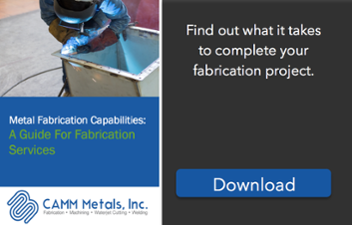Introduction:
Sheet metal fabrication is a critical process in modern manufacturing, producing components used in various industries such as aerospace, automotive, electronics, and construction. Over the years, advancements in technology have revolutionized the sheet metal fabrication process. One of the most significant breakthroughs has been the adoption of 3D Computer-Aided Design (CAD) software, enabling fabricators to create accurate, high-quality parts with increased efficiency. In this blog post, we will explore how sheet metal fabricators harness the power of 3D CAD files to produce top-notch components.
- Digital Prototyping: A Leap from Paper Drawings
Gone are the days when sheet metal fabricators relied solely on manual paper drawings and physical prototypes. 3D CAD software has streamlined the prototyping process by allowing engineers and designers to create precise digital models of the desired components. This digital representation offers a three-dimensional view of the part, complete with accurate dimensions and tolerances. This level of precision minimizes errors and reduces the need for time-consuming, costly physical prototypes.

- Collaborative Design: Breaking Down Communication Barriers
3D CAD files enable seamless collaboration between design teams, engineers, and fabricators. Multiple stakeholders can access and work on the same design concurrently, promoting effective communication and minimizing misunderstandings. Any changes made to the 3D model are instantly visible to all team members, reducing the chances of discrepancies during the fabrication process. The collaborative nature of 3D CAD fosters a more agile and efficient workflow, ultimately leading to better-quality parts.
- Design Optimization: Identifying and Resolving Issues
With 3D CAD software, fabricators can analyze the design for potential issues and inefficiencies before the actual fabrication begins. The software allows for simulations and stress tests, helping identify weak points, areas of material wastage, or potential manufacturing challenges. By addressing these concerns early in the design phase, fabricators can make necessary adjustments and optimize the part for improved functionality and cost-effectiveness.
- Seamless Integration with CNC Machinery
3D CAD files are essential for Computer Numerical Control (CNC) machinery, which automates the fabrication process. The CAD files provide precise instructions to CNC machines, guiding them on the necessary cutting, bending, and forming operations. This automation eliminates manual errors, ensuring that each part is produced with unparalleled accuracy and consistency. Additionally, the use of CAD files reduces setup time, enabling fabricators to deliver parts faster.

- Material Optimization: Minimizing Waste
One of the key challenges in sheet metal fabrication is material waste. By using 3D CAD files, fabricators can optimize the nesting of parts within the raw sheet material. The software calculates the most efficient arrangement, minimizing scrap and reducing material costs. This eco-friendly approach not only benefits the bottom line but also contributes to sustainable manufacturing practices.
Conclusion:
The integration of 3D CAD software into the sheet metal fabrication process has undoubtedly elevated the industry's capabilities. From precise digital prototyping to collaborative design and seamless integration with CNC machinery, CAD files have revolutionized the way fabricators approach their craft. The ability to identify and resolve design issues beforehand, optimize material usage, and increase collaboration has resulted in the production of high-quality sheet metal parts with exceptional precision and efficiency. As technology continues to evolve, sheet metal fabricators can expect even greater advancements, further enhancing the quality and versatility of their offerings.



